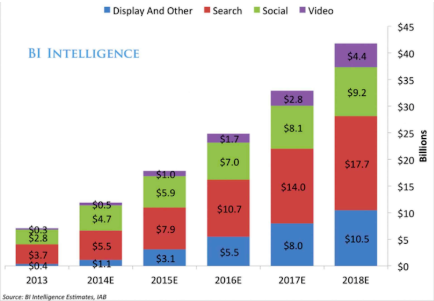How do you consume your news? According to Nieman Labs, 85% of Americans get their news directly from their smartphones. Clearly, the demand for news apps is in full swing. And as newspapers try to remain relevant in a digital world, more and more are turning to apps for assistance.
Media outlets understand the benefits of having a mobile app, but being able to clearly demonstrate return on investment is a different story. Below are X ways to calculate the ROI of your news app:
1. App Investment
Developing an app is not cheap. Analyze the cost of investment you’ve made to create and run your app such as:
- Cost of initial app development: either the internal resourcing cost or agency fees
- Cost of app advertising: paid media placements, paid ads across various marketing channels, etc.
- Cost of app maintenance and optimizations: resources dedicated to fixing bugs and continuing app enhancements
- Cost of app marketing: human resources dedicated to increasing app engagement via mobile app marketing (push notifications, in-app messages, etc.)
- Cost of products used to support apps: mobile marketing platform, analytics, attribution, etc.
All of the above factor into the cost of creating and running your app. While all are notable, let’s focus on the last one for a moment: cost of products used to support apps.
Having access to deep insights about your users can greatly improve the effectiveness of your mobile app marketing campaigns, boosting user retention and conversion rates in a big way. This comes from investing in a mobile app marketing platform.
Think of it this way: if you have a CMS for your web and email marketing, why wouldn’t you have the same for your app?
2. Revenue Generated By App
Media apps generate revenue in three main ways; ad revenue, subscriptions, and retention. But in order to capitalize on any of these tactics, you must ensure you have great content. The better the content, the biggest the opportunity to generate a profit.
When calculating your app’s ROI, you need to consider the following revenue sources that you should be tapping into:
1. Ad revenue: According to a recent report released by Business Insider, ads account for 55% of total mobile publisher revenue. These ads take three forms; video, display, and native.
- Video ads: If you’ve been browsing the web or apps, odds are that you’ve noticed an uptick in the amount of video ads you’re faced with. In fact, the fantasy football app I use recently introduced video ads before you can check your score. And with 33% of mobile revenue now generated by these video ads, odds are we’ll be seeing more and more of them.
- Display ads: Display ads are the straightforward ads you’re used to seeing while viewing content. They can be a banner ad say on the right hand rail of a page, or somewhere else throughout. They tend to be those invasive ads that follow you around after you view an item.
- Native ads: Native ads are designed to be less disruptive, and seem like a part of the experience. Often they take the form of related content links but if you look closely you’ll notice the are sponsored.
Ad revenue alone can more than make up for any investments made within your app if the latest trends from Business Insider are any indication:

2. Subscriptions: It’s not uncommon for news apps to be subscription based to access all of their content. Many news apps offer a limited amount of content for free but expect you to subscribe and pay – just like you would to a newspaper back in the day – if you want unlimited content.

The New York Times has two digital options for their audience offering a range of premium content from their infamous crossword puzzle, to partner discounts and more.
3. Retention & Customer Lifetime-Value
Understanding how your app influences customer retention is a crucial element of determining its ROI. Consider the following:
- Do customers who have the app have a higher retention rate than non-app customers?
- Are customers who have the app more engaged than non-app users?
- Are app users more inclined to to spend money on gated content or other premium features than non-app users?
4. The Intangibles
Much like brand awareness plays, there is are intangible benefits to having an app that you must consider when measuring app ROI. Consider the following:
- Positive lift in brand perception: Let’s face it – news outlets have a reputation of being a bit dated. Having an app helps to revitalize your brand and assures your audience that you’re embracing the future with open arms.
- Deep customer insights: Back in the day, media outlets had little information beyond demographics to go off of about their customers. Now, they can see every article a user consumes. This information is invaluable as it allows them to serve up highly relevant content based on behavioral insights that with keep them engaged; boosting ad revenue and customer retention.
Final Thoughts
Nowadays, there isn’t much debate about whether or not having an app is beneficial, but understanding how your app is driving business is key to optimization and enhancements. With more people turning to their mobile devices for news than ever before, media companies are in a prime position to capitalize with the right mobile strategy in place.

